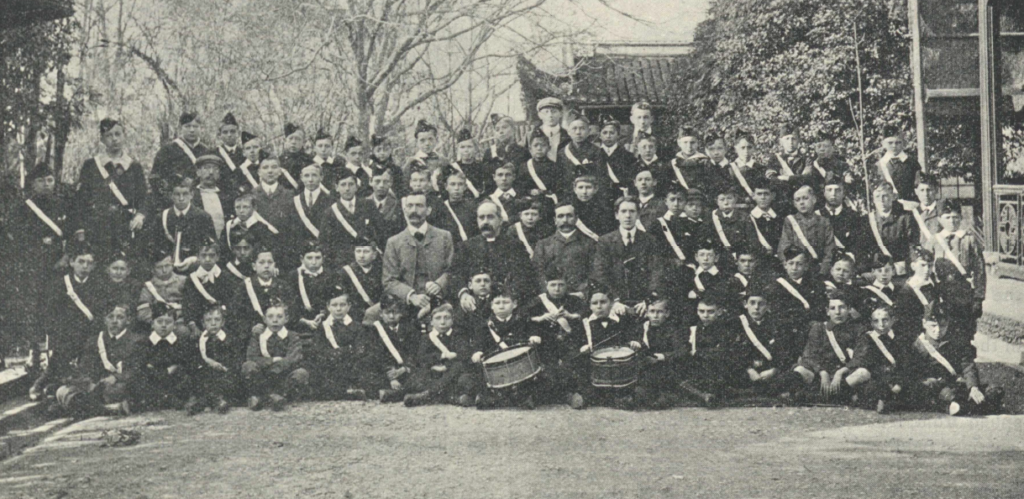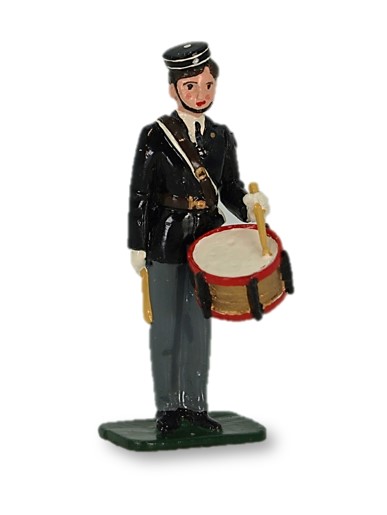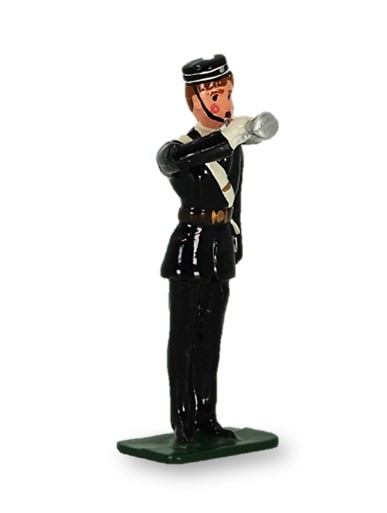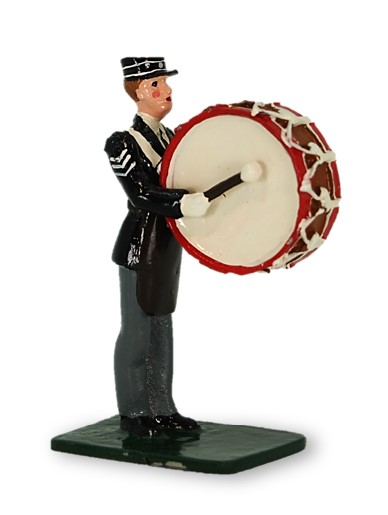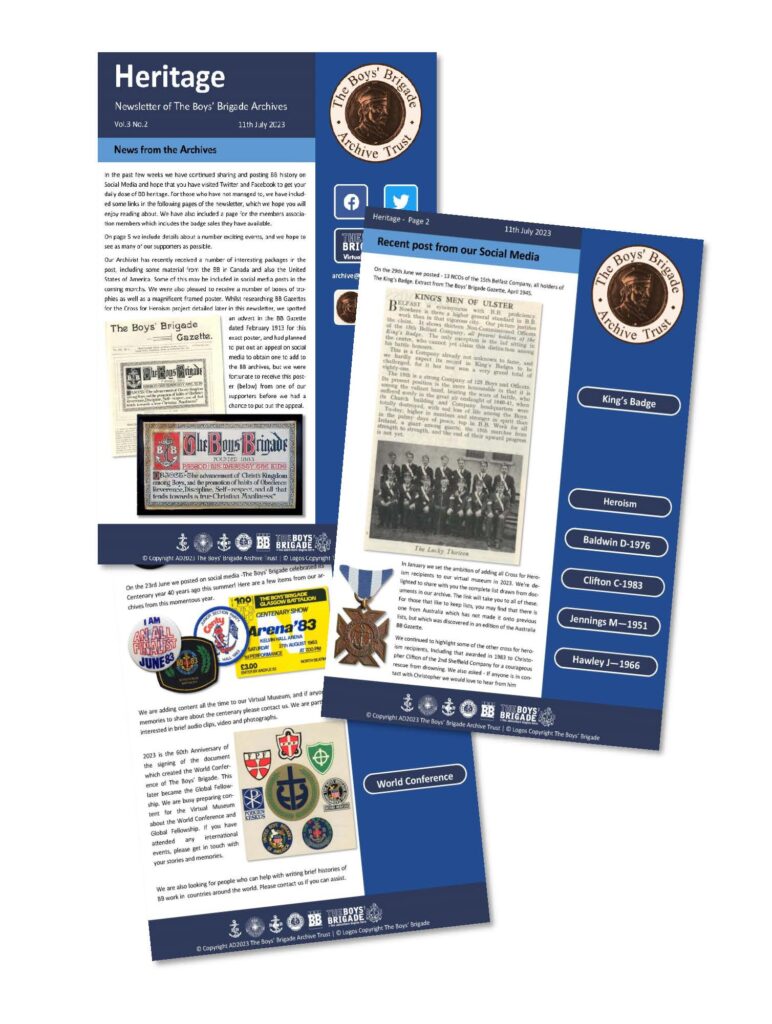China
The Boys’ Brigade was first introduced to China in 1903 with the formation of the 1st Shanghai Company, in connection with the Shanghai Union Church. The Company Captain, Mr Alfred Hill, reported in the BB Gazette of October 1903:
‘We started the Session in October last with a roll of 40, and finished the Session with 64 Boys and 3 Officers, besides other helpers. The Nationalities of the Company are very mixed, including British, Germans, Americans, Jews, Russians, Danes, and Portuguese, but the majority are British, and all speak the English tongue.’
By 1910 it is thought that this Company might have become a Boy Scout troop as Boys Brigade work in China was suspended. In 1915, then only twenty-five years of age, the Rev. A. Guthrie Gamble, went to South China as a missionary of the Presbyterian Church of England to run a mission school at Swatow (subsequently renamed Shantou). Firmly convinced that the B.B. method was relevant to Chinese boys, he soon commenced the 1st Swatow Company, securing its registration in August 1917. Very soon two more companies were operating at Wukingfu and Shanghang, and in 1920-21 a South China Battalion of seven companies and 650 Boys was formed. Guthrie Gamble’s furlough tour of 1923-24, included a talk at Brigade Council in Newcastle and forming the China Auxiliary Mission. A contribution of £100 by The Boys’ Brigade helped towards the establishment of The Boys’ Brigade Institute, built in Swatow for the South China Battalion of The Boys’ Brigade.
The movement soon earned a special place in the affections of the local people who flocked, 50,000 strong, to the annual half-day demonstrations which were dazzlingly efficient affairs of drill and all forms of physical recreation carried out in a carnival atmosphere. The B.B. Anchor became known locally as ‘The sign of love in action’.
By the mid-1920s, however, deteriorating civil and political unrest throughout China threatened to disrupt the B.B. work in Swatow. The end of the B.B. session in May 1926 saw what Gamble described as the ‘first rumblings [of] persecution’ around Swatow’ adding:
‘In the succeeding months, when anti-foreign feeling ran high, the Boys behaved magnificently. They have yielded to none in true patriotism, but they have refused to be stampeded into senseless vituperation of foreigners, and the relations between us have never been better. In the face of considerable personal risk, and – from the Boys’ point of view still harder to bear- much scorn and ridicule, they have borne abundant witness to the strength of the bond that unites us in the great brotherhood of the B.B’.
The B.B. Institute frequently served as a refuge, and on several occasions even came under fire. During 1928 no parade was abandoned, and forty-five boys received baptism. By 1929 even the most heroic stoicism could resist no longer, and Gamble wisely closed 1st Swatow, South China’s only surviving unit. Soon afterwards foreign citizens were ejected from the region.
Back in England, Guthrie Gamble continued following the work of The Boys’ Brigade in China. In the South China and Malaya Missionary Auxiliary Annual report of 1931, Gamble noted that a Company was being organised under the auspices of the Baptist Missionary Society in Shantung, and the resumption of work in Shanghai.
Archive records show the formation of the 1st Peking in 1932, however this Company was short-lived, and a further Company formed at the China Inland Mission at Lotze in 1938, is believed to have closed in about 1940, most likely due to the Second World War.
The South China Missionary Auxiliary, which now included Missionary work in Malaya following the formation of the 1st Singapore Company in 1930, was closed in 1931 and, in its report from the same year, recorded that:
‘Conditions in China have made the continuance of work along specifically B.B. lines impossible for the time being, and, since the Auxiliary was formed expressly for the support of B.B. work rather than for that of general missionary effort, we no longer feel justified in inviting contributions from home Companies.’

